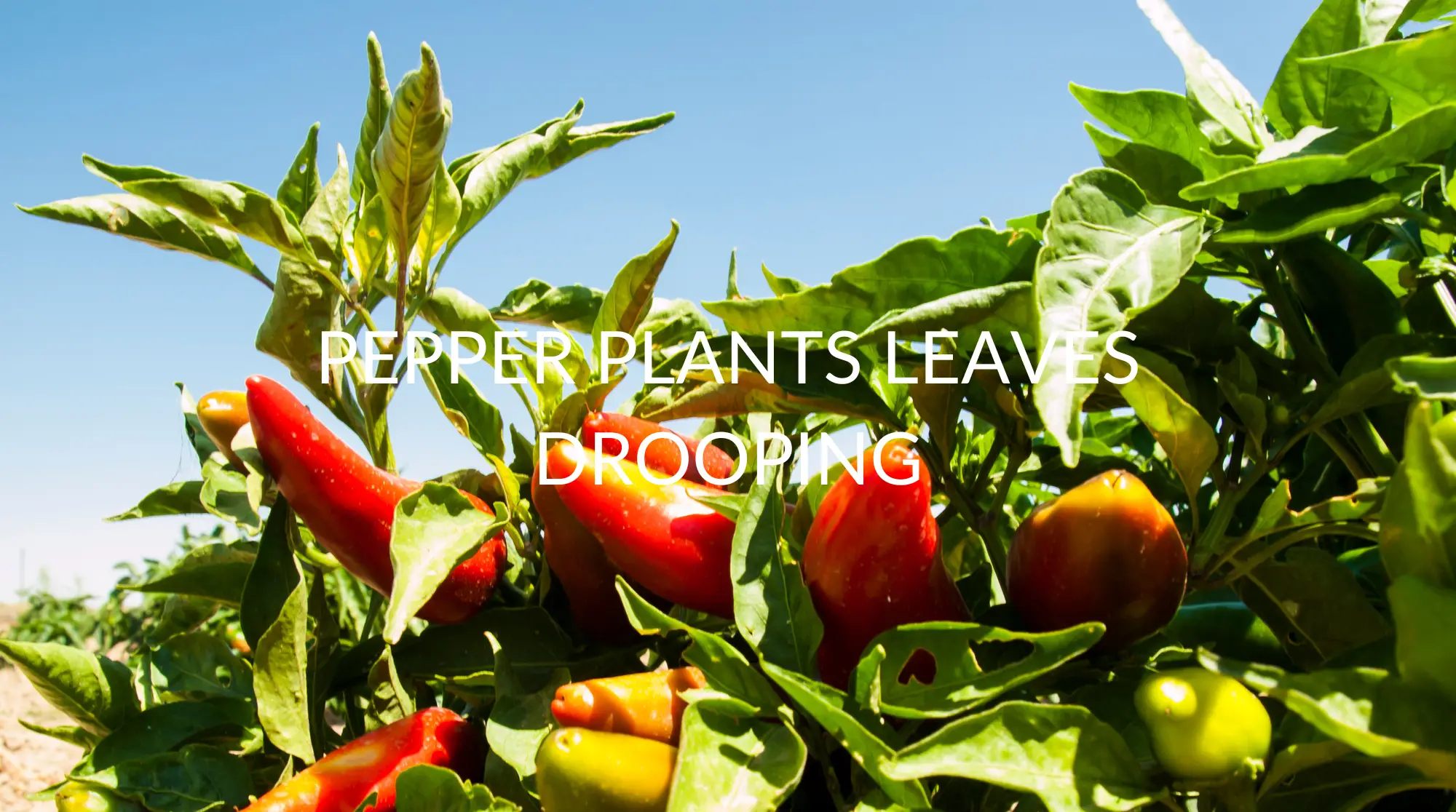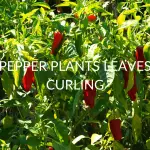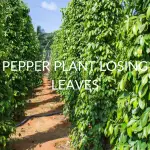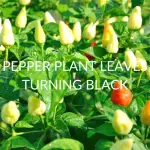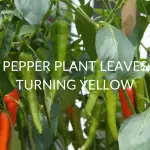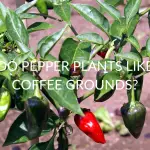Have you found that your gorgeous pepper plants’ leaves are beginning to droop? You might be trying to decide if you should be worried or not and if you can combat this issue on your own. Have no fear, there are a few reasons why pepper plant leaves can begin to droop, but none of the reasons particularly spell out an untimely death for your plant.
There are a variety of reasons why your pepper plant’s leaves are drooping, most likely being from a lack of water. Other reasons your pepper plant leaves are drooping could include being in cooler temperatures or in excessive heat. Even your pepper becoming shocked after transplant can have this effect on its leaves.
Although it might seem intimidating to some to consider all the varying possibilities as to why your pepper plant leaves are drooping, there is no reason to worry. As long as you take each possibility one step at a time, you will be able to accurately determine which factor is most contributing to your problem, and this article will help you do just that.
How To Identify If Your Pepper Plants Are Drooping
“Sad” Looking Leaves
A wilted pepper plant will have droopy, “sad” looking leaves that do not perk up. Instead of a sturdy, vigorous plant, you may observe a plant that is not perky looking and whose sag towards the ground. Healthy pepper plants should have leaves that remain erect, strong, and pointed outward. If your plant has leaf tips pointing at the ground, it is likely drooping.
Yellowing Leaves
Another sign of a drooping pepper plant is yellowing leaves- you may notice yellowing leaves in accompaniment with drooping on your pepper plant. This is usually an indication of overwatering, although not always.
Soil Not Holding Water
Droopy pepper plants may have soil that is very resistant to absorbing water, making it difficult for your plant to absorb the water it needs into its roots. One of the causes of drooping pepper leaves is being underwatered, so be on the lookout for this in your soil to avoid it not receiving enough hydration.
Browning Leaf Tips
If you can observe the tips of your pepper plant’s leaves getting brown, this is likely an indicator of underwatering your pepper plant, a common factor that contributes to leaf drooping. If you observe this in your plant, you should give it a good watering immediately.
Sunburned Leaves
If you can see your pepper plant’s leaves changing color, especially in between veins or margins, it may have been sun-scorched, leaving you with a plant that has droopy leaves. Oftentimes, sunburned leaves will begin to droop once enough damage has been inflicted.
Why Are My Pepper Plant Leaves Drooping?
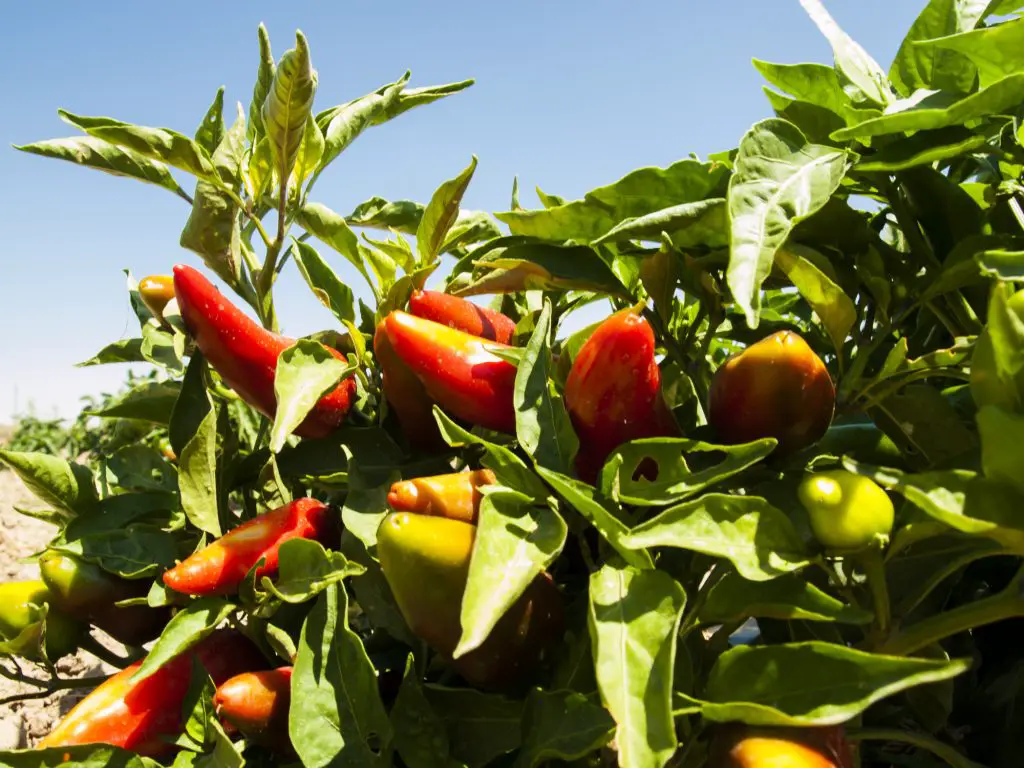
There are a few reasons why pepper plant leaves can begin to droop. Deciding which factor is most contributing to the drooping of your pepper plant leaves is the first step in combating the issue. Taking note of any recent environmental changes (like an unexpected frost) and plant care habits will help you in determining which course of action to take.
Lack Of Water
Lack of water may be one of the top reasons why your pepper plant leaves are drooping. The signs your plant is being underwatered can include dry soil and no other serious issues that you can identify in the plant. If your pepper plant has drooping leaves accompanied by dry, dead leaf tips, this is also a sign of underwatering.
Age
Some plants droop as they get older, meaning that leaf drooping is not always an indication of a problem. For pepper plants, however, this would likely be a rare issue. Most pepper plants only live a maximum 3-5 years. Even so, pepper plants that are near the end of their lifespan may exhibit symptoms such as leaf drooping.
Overwatering
Another contributor to leaf drooping in pepper plants can include overwatering. Oftentimes, your pepper plant will also express yellowing leaves alongside leaf drooping if it has been overwatered. Another thing to lookout for when determining if your pepper plant is getting too much water is to look for browning in the younger, newly sprouting leaves.
An additional sign of your pepper plant being overwatered is observing little to no growth and seeing any kinds of algae or mold growth on or near the soil your pepper plant is growing in. If you note these aquatic-loving plants growing on your soil, they’re definitely getting too much water.
Another thing to take note of when considering your plant being overwatered is the solidity of its stem. If it’s mushy or squishy, the plant has likely been overwatered. More overwatering red flags include fungus gnats and if your pepper plant leaves feel soft and limp. The leaves on your plant may even look limp to help you deduce what’s causing the drooping.
Fungus gnats appear when soil is not aerated, is too wet, and is easily absorbent. Most fungus gnats are attracted to many overwatered plants and will lay their eggs on the wet surface. The more you let the problem go, the harder it will be to treat, so it’s best to deal with the fungus gnats right away. Other indicators of overwatering are:
- Stunted Roots
- Rotting Roots
- Edema In Leaves
Sunscalding/ Sunburn
Although pepper plants require a lot of sunlight for them to be successful, they also require a bit of shade, too- that is, if they weren’t sowed directly into the ground. Interestingly, pepper plants grown by seed outdoors seem to adapt better to the sun’s harsh rays than do plants that were grown indoors and later moved outside.
Transplant/Shock
Your pepper plants can become shocked in a variety of ways, be it through transplantation to another area or through extreme and sudden changes in their environment. This can easily happen when you move your pepper plant from indoors to the outside environment. Another factor that contributes to shock is moving the plant to a larger growing container.
Will Wilted Plants Recover?
Many wilted pepper plants recover with just a bit of treatment, some even within a few hours of wilting. The recovery time of your plant entirely depends upon what contributed to its wilting in the first place. If it has been overwatered, a few days may be needed for it to dry out. If your pepper plant has been underwatered, it may perk up a couple of hours after watering.
Other times, when pests or shock are the culprits, recovery time and treatment efficacy may be hindered. A lot of your pepper plant bouncing back revolves around the successful eradication of pests or handling the transplantation of your pepper plant seedling properly.
How Do You Revive Drooping Pepper Plants?
You can revive your drooping pepper plant in a variety of ways, depending on what’s causing its leaves to droop. Some tactics are:
Stop Overwatering
If you’ve been overwatering your pepper plant, you should stop immediately to improve the chances of it being revived. This will give it ample time to use up the excess amount of water it has soaked up over the past few days so it can bounce back.
Stop Underwatering
If you see all the signs of your pepper plant being underwatered, you should give it some water immediately. You can also be sure not to forget to water by setting alarms on your phone, marking your calendar, having loved ones remind you, or better yet, joining in on the watering fun.
Move It From Areas That Are Too Sunny
If you notice your pepper plant becoming sunscalded, you should attempt to move it immediately to save it from drooping and eventually dying. If moving your pepper plant is not possible, you should attempt to provide your plant shade through a makeshift awning or some sort of item you can put near it to cast a shadow onto it during the day.
Revive Pepper Plant From Transplantation Shock
To help your pepper plant revive itself from a difficult transplantation, you should keep the soil around it wet and evenly moist but not soggy. You should also take care not to let it be in the direct pathway of heavy winds and extreme temperatures.
Revive Peppers Suffering From Extreme Temperatures
Extreme temperatures can also contribute to pepper plant leaf drooping, from extreme heat to extreme cold. To revive pepper plants that experience leaf drooping due to these factors, you should promptly remove them from the environment that’s exposing them to extreme conditions.
How To Prevent Pepper Plants From Drooping
There are a few ways to prevent pepper plants from drooping. Some ideas include:
Avoiding Pepper Plants Drooping During Transplantation/Shock
Even if you transplant your pepper plant from a pot to your garden, you risk shocking it. To avoid shocking your pepper plant if you are transplanting it from a pot to the soil, you should immediately soak the ground around it and where its roots are with lots of water to make sure they get enough moisture and nutrition to survive.
You can also be sure not to tamper with the roots of your plant when transplanting it. A little bit of loosening the dirt is okay, but excessively handling the plant may shock it. You should avoid bumping the roots, shaking them, or handling them in a rough manner.
Avoiding Pepper Plants Drooping Due To Sunscald
If you grew your pepper plants indoors to start, you would want to be sure when bringing them outside for the growing season to put them in a place that receives partial shade, at least for a part of the day. As your pepper plants remain outside, they will eventually acclimate to the sun, a process called hardening. Failing to do this may induce immediate leaf drooping.
Another way you can prevent sunscalding is by only placing it in the sun when it needs sunlight and then removing it from the sunlight. This is something that’s recommended for those who don’t have an ideal partially sunny, partially shaded spot. If you find your pepper plant has become the victim of sunscald, you should prune any dead leaves you find.
Growers can start the process of hardening their pepper plants by bringing plants outside in temperatures around 45 degrees Fahrenheit in a partially sunny location, about an hour the first day. Move plants back inside after they’ve reached their time limit and gradually increase the time the plants are outdoors.
Avoiding Overwatering Your Pepper Plant To Prevent Leaf Drooping
To avoid overwatering your pepper plant, you should be aware of it getting a mushy stem, take note of any algae or mold growing around it and any yellowing leaves. If you observe any of these signs, you should take note of your watering schedule and adjust it accordingly to best care for your pepper plants.
Avoiding Under Watering Your Pepper Plant To Prevent Leaf Drooping
Another thing to lookout for when determining if your pepper plant has been under watered is to observe your garden’s dirt. If you see cracks or the dirt looks pale, you should water your plant as soon as possible to help it to avoid incurring more damage. The longer you leave a plant underwatered, especially in the sun, the more the leaves are at risk.
You can also determine if your pepper plant could use a bit more watering by simply observing its growth. If you notice that your plant’s growth takes longer than the growth of a normal pepper plant, it may need more water. You should be sure to note the size of the newly growing leaves of your plant, as smaller leaves indicate the need for more H2O.
Some other signs of underwatering your pepper plant may include wilting leaves. Wilting leaves indicate that the cells and tissues of the plant are changing somewhat in composition. Specifically, when plants are under-watered, their cell membranes begin to stop putting pressure on the plant cell walls, lowering the pressure within cells and giving leaves less rigidity.
Avoid Pests That Cause Pepper Plant Leaf Drooping
To help your pepper plant defend itself against different pests, you may consider applying a pesticide to your plants. For those who prefer more organic options, you can try planting it with other plants that ward off pests that often target the pepper plant.
Another way you can lessen the amount of pests that can come into contact with your pepper plant is to avoid overwatering. If you overwater your plant, you risk the soil becoming a perfect breeding ground for many pests that like to lay their eggs on moist soil, such as fungus gnats.
Recap
Although it can be a bit overwhelming learning all the different contributors to pepper plant leaf drooping, prevention is the number one cure. By helping your plant avoid extreme temperatures, hardening your plant after introducing it outdoors, being proactive on pest management, and knowing the signs of under/overwatering, you can successfully grow beautiful pepper plants that never droop and always remain upright.

